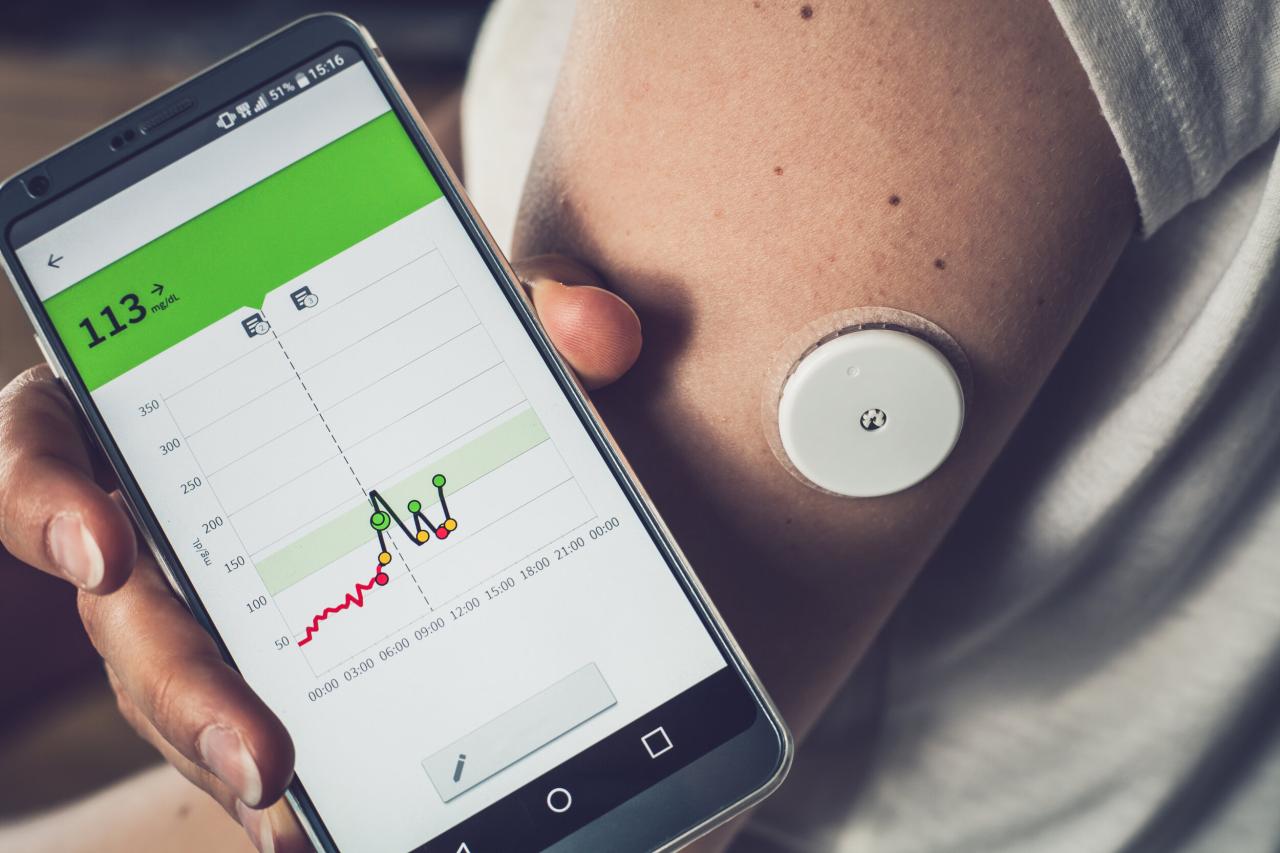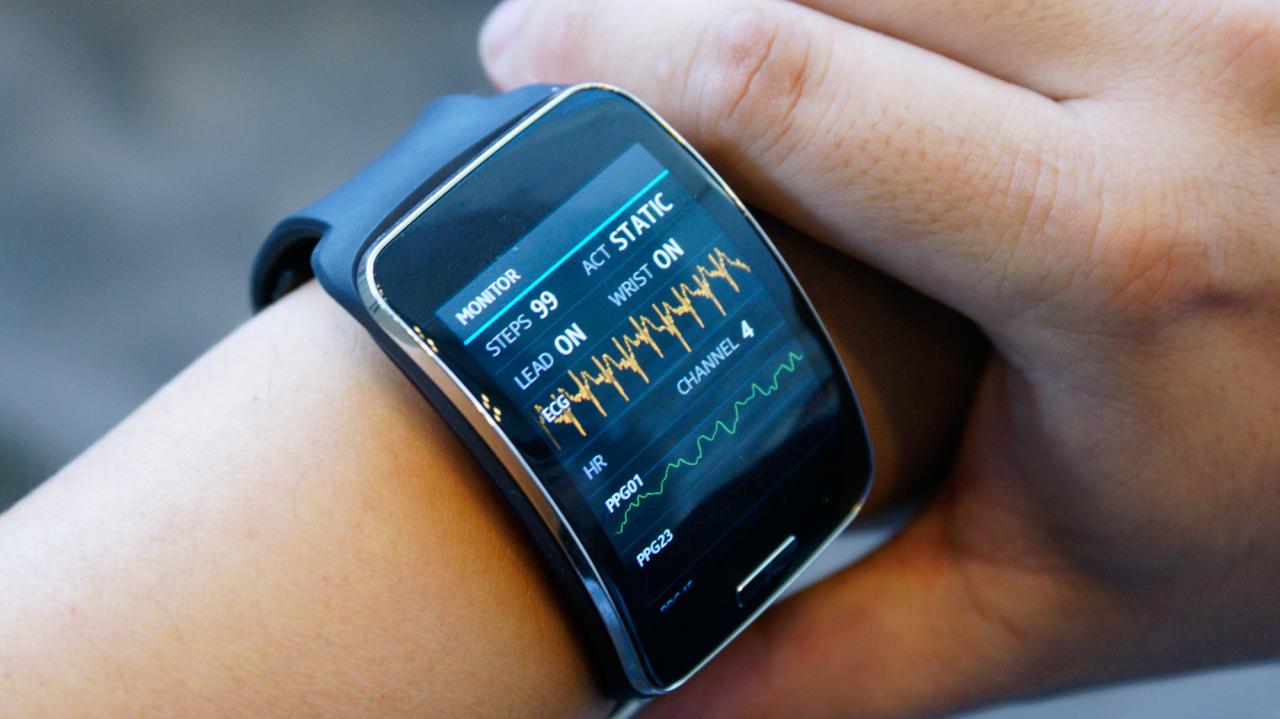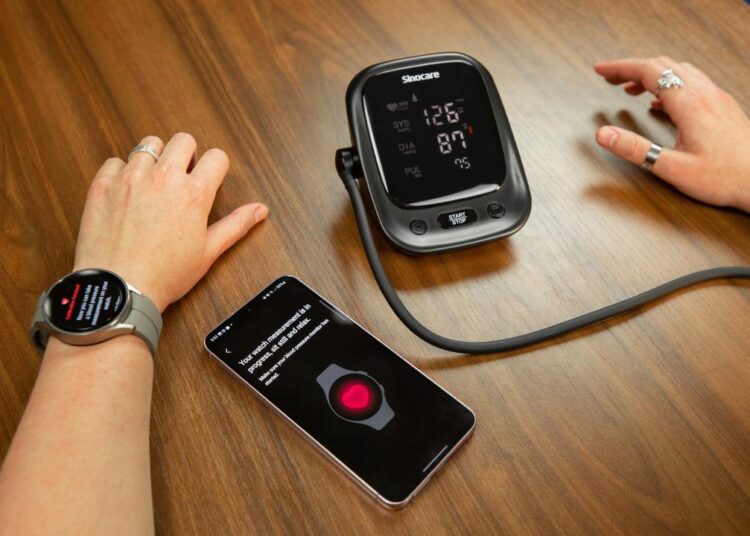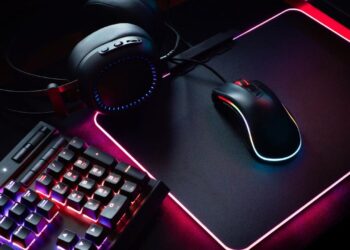Advanced Wearable Devices

Wearable technology has moved far beyond basic fitness trackers, evolving into sophisticated, medical-grade monitoring tools that provide a continuous stream of vital health data directly from the body.
A. Smartwatches with Comprehensive Biometric Sensors: Modern smartwatches (like Apple Watch, Samsung Galaxy Watch, Google Pixel Watch, and various Garmin models) are at the forefront of personal health monitoring. They’re equipped with an array of advanced biometric sensors, including:
* Optical Heart Rate Sensors: These continuously track your heart rate, providing insights into your resting heart rate and heart rate variability (HRV). This data helps assess your stress levels, recovery status, and overall cardiovascular health trends throughout the day and night.
* Electrocardiogram (ECG) Sensors: Capable of generating an electrocardiogram, these sensors can detect signs of atrial fibrillation (AFib), a common and potentially serious heart rhythm disorder. By simply placing a finger on the watch’s crown or bezel, the device records electrical signals from your heart, providing a single-lead ECG that you can share with your doctor.
* Blood Oxygen Saturation (SpO2) Monitors: These measure the oxygen level in your blood, which is crucial for respiratory health and detecting conditions like sleep apnea. Low SpO2 levels can indicate underlying health issues, and continuous monitoring, especially during sleep, offers vital insights into your breathing patterns and oxygen delivery.
* Skin Temperature Sensors: These track your baseline skin temperature, offering valuable insights into sleep cycles, potential illness onset, and even ovulation tracking for fertility planning. Subtle shifts in temperature can be early indicators of physiological changes.
B. Smart Rings, Patches, and Body-Worn Sensors: Beyond the wrist, other unobtrusive form factors are gaining prominence for continuous monitoring. Smart rings (e.g., Oura Ring) offer highly accurate sleep tracking, heart rate variability, and temperature monitoring directly from your finger, often boasting longer battery life than smartwatches due to their lack of a screen. Their discreet nature makes them ideal for 24/7 wear. Wearable patches are emerging for specialized monitoring, such as continuous glucose monitoring (CGM) for diabetics, vital sign tracking in clinical settings, or even specific disease markers. These patches adhere to the skin for days or weeks, wirelessly transmitting data without requiring user interaction, providing a passive yet consistent data stream. Furthermore, specialized body-worn sensors can monitor posture, gait abnormalities, tremors (for Parkinson’s patients), or even vocal patterns for early detection of neurological conditions. These subtle sensors gather nuanced data, creating a richer tapestry of an individual’s health status beyond just basic vitals.
C. Smart Clothing and Textiles: The integration of sensors directly into fabric is creating smart clothing and textiles that offer comfortable and seamless health monitoring. These garments can embed electrodes to monitor ECG and heart rate with high accuracy, pressure sensors to analyze posture or gait, and temperature sensors for physiological monitoring during exercise or sleep. Smart socks can track running form to prevent injuries, while intelligent sleepwear can monitor breathing patterns and sleep quality without the user feeling encumbered by separate devices. This technology aims to make health monitoring truly invisible, blending seamlessly into everyday attire, and providing insights without requiring conscious effort from the user, ideal for long-term, passive data collection.
D. Wireless Biosensors for Environmental and Physiological Monitoring: Beyond direct body contact, wireless biosensors are extending health monitoring to our environment and physiological outputs. This includes air quality sensors that monitor pollutants impacting respiratory health (e.g., PM2.5, VOCs) within your home or immediate surroundings, UV sensors that advise on safe sun exposure levels, and even smart toilets that can analyze urine for early signs of disease markers (e.g., glucose, protein, blood). These discrete, often passive, sensors provide crucial contextual health data, linking environmental factors directly to personal well-being and offering a holistic view of health. This moves monitoring beyond just the individual’s body to encompass their immediate surroundings and biological outputs, allowing for a more complete picture of health influences.
AI and Data Analytics
The sheer volume of data collected by these advanced monitoring devices would be overwhelming without the power of Artificial Intelligence (AI) and sophisticated data analytics to process, interpret, and derive actionable insights.
A. AI-Powered Health Platforms and Predictive Analytics: At the core of Health Monitoring’s New Era are AI-powered health platforms. These systems leverage machine learning algorithms to process vast datasets from wearables, electronic health records (EHRs), clinical trials, and even social determinants of health. AI can identify subtle patterns, correlate various health metrics, and even predict the onset of certain conditions (e.g., predicting a heart event days in advance based on HRV and sleep data, or flagging early signs of infection from temperature and heart rate trends). This predictive analytics shifts healthcare from reactive treatment to proactive prevention, allowing for early intervention and personalized preventative strategies, thereby reducing the severity and cost of illnesses. This ability to anticipate problems rather than merely react to them is a game-changer in preventative medicine.
B. Personalized Health Coaching and Digital Therapeutics: AI-driven insights are fueling the rise of personalized health coaching and digital therapeutics. AI models can analyze an individual’s unique health data, lifestyle, and goals to provide tailored recommendations for exercise, nutrition, stress management, and sleep optimization. These recommendations are dynamic, adapting to the user’s progress and changing health status. Digital therapeutics (DTx) are software programs that deliver evidence-based therapeutic interventions to prevent, manage, or treat a medical disorder or disease. Delivered via apps and integrated with wearables, DTx can guide patients through cognitive behavioral therapy (CBT) for insomnia, provide exercises for chronic pain, or manage diabetes with personalized guidance. Critically, many DTx solutions are regulated as medical devices themselves by health authorities, ensuring their clinical efficacy and safety.
C. Diagnostic AI for Early Disease Detection: AI’s ability to analyze complex data sets, particularly medical images (radiology scans, pathology slides) and genomic data, is revolutionizing diagnostic capabilities for early disease detection. AI algorithms can detect anomalies in X-rays, MRIs, CT scans, and pathology slides with accuracy sometimes surpassing human experts, identifying early signs of cancer (e.g., subtle changes in mammograms), neurological disorders (e.g., early signs of Alzheimer’s from brain scans), or cardiovascular disease. In genomics, AI can sift through vast amounts of genetic data to identify predispositions to certain conditions or optimize drug selection (pharmacogenomics), ushering in an era of ultra-early and highly personalized diagnostics by identifying unique genetic markers that influence health outcomes and drug responses.
D. Data Integration and Interoperability: A significant challenge in health monitoring has been the fragmentation of data across various devices, apps, and healthcare providers. Next-gen health monitoring relies on robust data integration and interoperability solutions. Cloud-based health platforms, standardized data formats (e.g., FHIR – Fast Healthcare Interoperability Resources), and secure APIs are enabling seamless data exchange between wearables, electronic health records (EHRs), lab results, pharmacy records, and patient portals. This holistic view of a patient’s health data empowers clinicians with comprehensive information and allows AI systems to build more accurate and useful health models, making data-driven care a reality and ensuring that no critical piece of health information is overlooked.
Remote Patient Monitoring and Telehealth

Health Monitoring’s New Era is extending clinical care beyond the traditional hospital or doctor’s office, bringing healthcare directly to the patient’s home through remote technologies.
A. Remote Patient Monitoring (RPM) Systems: Remote Patient Monitoring (RPM) systems use connected devices (wearables, smart scales, blood pressure cuffs, glucose meters, pulse oximeters) to collect physiological data from patients in their homes and transmit it securely to healthcare providers. This is especially vital for managing chronic conditions (diabetes, hypertension, heart failure, COPD), post-operative recovery, and elder care. RPM allows healthcare teams to continuously track patient progress, detect deterioration or non-adherence early, and intervene proactively, often before symptoms become severe. This reduces hospital readmissions, lowers healthcare costs, and significantly improves patient outcomes by enabling timely, data-informed care from a distance, freeing up hospital beds and reducing the burden on acute care facilities.
B. Telehealth and Virtual Consultations: The growth of RPM is intrinsically linked with the expansion of telehealth and virtual consultations. Secure video conferencing platforms allow patients to consult with doctors, specialists, and therapists from the comfort of their homes. This improves access to care, particularly for individuals in rural areas, those with mobility issues, or those facing time constraints. Telehealth reduces travel burdens and wait times, making healthcare more convenient and accessible. Integrated with RPM data, telehealth consultations become even more effective, allowing clinicians to review real-time patient data and trends during the virtual visit for more informed decision-making and personalized guidance, bridging the gap between physical distance and quality care.
C. Wearable-Aided Clinical Trials: The ability to collect continuous, real-world data non-invasively makes wearables and RPM systems revolutionary tools for clinical trials. They can gather objective data on patient activity levels, sleep patterns, heart rate, heart rate variability, and even subtle changes in gait or tremor, providing richer and more frequent insights into drug efficacy and side effects than intermittent clinic visits. This accelerates drug development by providing more comprehensive and granular data, reduces costs by enabling remote participation, and provides a more comprehensive understanding of a treatment’s impact in everyday life, leading to faster and more successful development of new therapies.
D. Digital Biomarkers and Real-World Evidence (RWE): The continuous data streaming from wearables and RPM systems is generating a wealth of digital biomarkers – physiological or behavioral data collected digitally that indicate a health state (e.g., changes in walking speed as an indicator of neurological decline, or alterations in sleep patterns as a sign of depression). This “real-world evidence” (RWE) provides insights into how diseases progress and treatments perform outside of controlled clinical settings. RWE is increasingly valuable for pharmaceutical research, regulatory approvals, understanding population health trends, and even developing new diagnostic criteria, offering a dynamic and expansive view of health and illness in the real world that complements traditional clinical trial data.
Holistic Health Management
Health monitoring is moving towards a holistic approach, integrating various aspects of an individual’s life for a comprehensive view of well-being, recognizing that health is influenced by more than just medical conditions.
A. Smart Kitchens and Personalized Nutrition: The smart kitchen is becoming a hub for personalized nutrition. Smart scales can analyze body composition and track weight trends. AI-powered food scanners and integrated apps can track dietary intake, analyze nutrient composition, suggest personalized meal plans based on individual health goals, dietary restrictions, and even genetic predispositions. Smart refrigerators can manage inventory, track expiration dates, and suggest recipes using available ingredients, reducing food waste while promoting healthier eating habits. This integrates nutritional guidance seamlessly into daily life, making healthy eating more manageable and precise.
B. Connected Fitness Equipment and Performance Optimization: Fitness tracking extends to connected fitness equipment (smart treadmills, bikes, rowing machines, strength training systems) that integrate with wearables and health platforms. These devices offer personalized workouts, track performance metrics (power output, cadence, resistance), and provide real-time feedback and guidance. AI coaches can adapt workout routines based on recovery data from wearables, daily energy levels, and long-term goals, optimizing training for peak performance, injury prevention, and continuous improvement for athletes and everyday fitness enthusiasts alike.
C. Smart Sleep Solutions and Environmental Optimization: Recognizing the critical role of sleep in health, smart sleep solutions are emerging to optimize rest. This includes smart mattresses that adjust firmness and temperature based on sleep stages, dedicated sleep trackers that monitor breathing, heart rate, and sleep cycles, and smart lighting/sound systems that create optimal sleep environments by mimicking natural light cycles or playing calming sounds. These tools aim to improve sleep quality, reduce disturbances (like snoring or sleep apnea), and provide insights into sleep disorders, thereby enhancing overall health, cognitive function, and mood through restorative sleep.
D. Mental Wellness Apps and Biofeedback Devices: Health monitoring’s new era also extends to mental wellness, acknowledging its crucial link to physical health. AI-powered mental wellness apps offer guided meditations, mindfulness exercises, and cognitive behavioral therapy (CBT) techniques for stress reduction, anxiety management, and mood improvement. Biofeedback devices (often wearable) can monitor physiological responses like heart rate variability, skin conductance, or brainwaves, providing real-time feedback to help users learn to control their stress responses, manage pain, or improve focus. These provide tangible, data-driven tools for improving mental resilience, emotional regulation, and overall psychological well-being.
Challenges and Ethical Considerations
While Health Monitoring’s New Era promises immense progress, its widespread adoption and continued evolution face several significant challenges and ethical considerations that demand careful and proactive management.
A. Data Privacy, Security, and Trust: The collection of highly sensitive personal health data raises paramount concerns regarding data privacy and cybersecurity. Protecting this data from breaches, ensuring its ethical use, and preventing unauthorized access are critical. Robust encryption, secure data storage, strict compliance with regulations (like HIPAA in the US, GDPR in Europe, and Indonesia’s Personal Data Protection Law), and transparent data governance policies are essential for building and maintaining user trust in these new health technologies. Users must feel confident that their most personal information is secure and used responsibly.
B. Accuracy, Reliability, and Regulatory Oversight: While many consumer health devices are impressive, their accuracy and reliability can vary significantly. Distinguishing between wellness trackers (for general lifestyle insights) and medical-grade devices (for diagnostic or treatment purposes), and ensuring appropriate regulatory oversight from bodies like the FDA (in the US) or similar health authorities worldwide for devices making medical claims, is crucial. Clear guidelines are needed to prevent misinformation, ensure clinical validation, and guarantee that health decisions are based on reliable and accurate data, preventing potential harm from unvalidated devices.
C. Interoperability and Data Fragmentation: Despite efforts, significant challenges remain in achieving true interoperability across diverse health monitoring devices, apps, and electronic health record systems. Data silos can limit the holistic view necessary for comprehensive health management and hinder the full potential of AI. Standardized data formats, open APIs, and industry collaboration are vital to create a seamless health data ecosystem that truly benefits patients, providers, and researchers, allowing data to flow freely and securely where needed.
D. Ethical AI and Algorithmic Bias in Healthcare: The application of AI in health monitoring raises profound concerns about algorithmic bias. If training data for AI models is not diverse or representative across different demographics, ages, or health conditions, algorithms can lead to inaccurate diagnoses or skewed recommendations, particularly for minority or underserved populations. Ensuring ethical AI development, transparent algorithms, and rigorous testing for bias are crucial for fair and equitable health outcomes for everyone, avoiding the amplification of existing health disparities.
E. Digital Divide and Equitable Access: The benefits of advanced health monitoring technologies risk exacerbating the digital divide if access remains unequal. The cost of devices, broadband availability, smartphone ownership, and digital literacy can create significant barriers to adoption, particularly in developing regions or for elderly populations. Efforts to promote affordability, expand connectivity, provide digital health education, and design user-friendly interfaces are essential to ensure these life-changing technologies are accessible to all segments of society, regardless of socio-economic status or geographical location.
F. Over-Reliance on Data and User Fatigue: The constant stream of health data can lead to user fatigue or anxiety (“data overload”). An over-reliance on numbers might overshadow qualitative aspects of health and well-being, potentially leading to unnecessary self-diagnosis or stress. Designing intuitive interfaces that present data in meaningful, non-overwhelming ways, and empowering users with actionable insights rather than just raw numbers, is crucial for sustained engagement and positive health behaviors, preventing burnout from constant monitoring.
Conclusion
Health Monitoring’s New Era is ushering in a profound revolution in how we approach well-being. From the pervasive intelligence of wearable devices and the predictive power of AI analytics to the convenience of remote patient monitoring and the holistic integration of lifestyle factors, these innovations are fundamentally transforming healthcare from reactive treatment to proactive prevention. While navigating the complex ethical, regulatory, and access challenges will be an ongoing journey, the immense potential for personalization, empowerment, and a healthier, more resilient future for all humanity, driven by these continuous digital insights, is truly boundless. The power to monitor and manage our health is increasingly in our hands, reshaping our relationship with well-being forever, and offering a future where optimal health is an achievable reality for more people than ever before.








